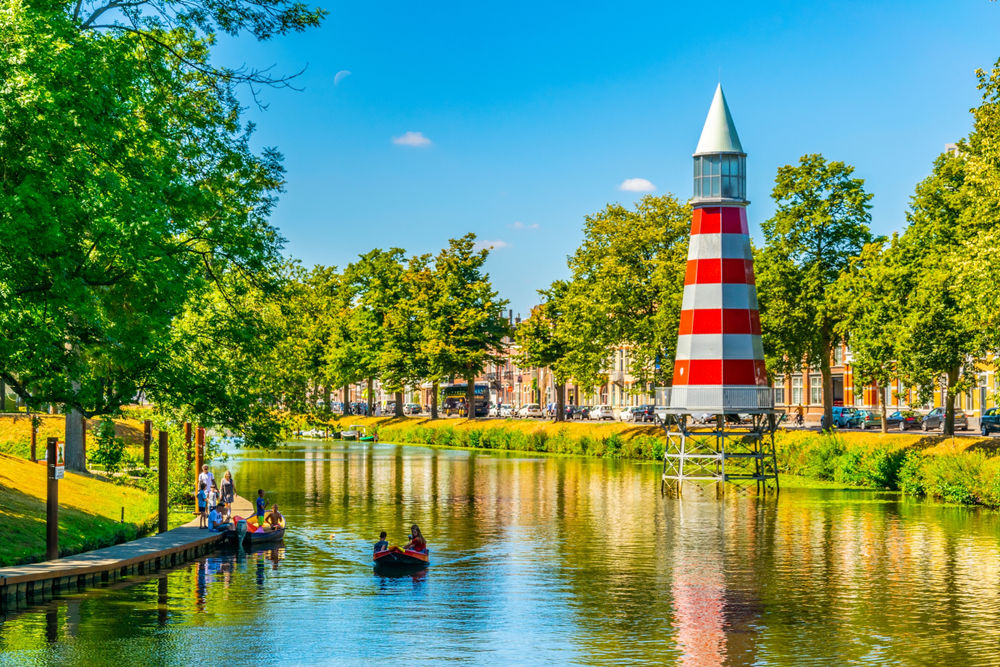What is a “City in a Park”?

How can we protect cities from climate change?
Do you remember the massive flooding in Germany and Belgium a year ago? Or heat records in Southern Europe that occurred in June? These are one of the few examples of climate change. Climate anomalies occur everywhere and negatively affect human lives, infrastructure and well-being. The situation is even worse in cities, urban areas filled with concrete buildings and less vegetation. Events like air pollution, heat stress and flooding are more extreme in cities because they are not built in a way to handle such challenges. Knowing that European urban areas will take up 83.7% of the space by 2050, actions must be taken to reduce the impact of climate change. So, what is the best practice to improve the climate resiliency of cities?
Green solutions
Let me introduce you to the concept of the “City in a Park”. It means building a city in a way that reminds us of a typical park; full of vegetation, animals and insects. The concept aims to connect people to nature while ensuring everyone is comfortable living in the city.
The main advantage of the city in a park is the measures that allow us to fight climate change. Most of the solutions are based on improving the greenery in the area, which has multiple benefits. Plants absorb the heat, and shadows from trees cool down the area by a few degrees. The roots of the plants also absorb the water efficiently, which means they can prevent overflow during heavy rainfall. Some types of vegetation absorb dust or other pollutants too, which means that the air quality can be improved as well. On top of that, plants are aesthetically pleasing and welcoming. Having them in our backyards, balconies, streets, buildings, and parks will make the area more attractive, especially during warm days. There are lots of ways to improve the greenery, but how do we apply them in cities?
Breda as a City in a Park
Several cities in the Netherlands aim to improve their climate resiliency. For instance, the municipality of Breda aims to be the first European city in the park by 2030. To do that, the municipality searches for ideas and techniques to implement green measures across the city. There are a couple of examples available at the moment. The city has tens of green facades where the roofs and walls of houses and buildings are covered with vegetation. It is a common practice because the municipality provides citizens with subsidies which reduce the purchase costs.
On the other hand, you can notice how green Breda is thanks to the parks in the city. The municipality protects this area so people can relax and enjoy nature while observing animals and birds. There are also measures designed for specific locations, such as permeable pavement in parking lots; it’s a pavement covered with strips of grass and concrete which stops the water from overflowing. These are a couple of familiar examples; however, there’s more to discover. An important part of creating a city in the park is communicating with relevant actors such as citizens, experts, businesses and the municipality. Together people can come up with practical solutions and implement these measures to make cities more green and sustainable. And it all relies on collaboration and vision.
Be part of the change
Take a moment to think about the place where you live now. Do people feel comfortable living here? Does it have enough greenery? Can it protect itself from extreme weather conditions? Answering these questions will allow you to understand whether your city is equipped to fight climate change. If you want to be involved in this challenge, I have a couple of suggestions that can help you with that.
Firstly, check out the website of the municipality you live in, as it usually has a strategy document and mission statement about environmental protection. Then browse the internet about the city in the park and look if any events are available in your city. You can also approach environmental consultancy groups or activists to share your ideas. If you want to make changes in your neighbourhood, you can gather the people and talk about the concept of the city in a park. By introducing the concept, measures and their benefits, you can earn people’s trust, which can help with the implementation.
Measures such as bird houses, vegetation in balconies and streets, and community gardens are easy to implement, so it’s easier to propose these ideas. It might seem like a lot of work; however, more people are aware of it easier it is going to be to design the city in a park.
